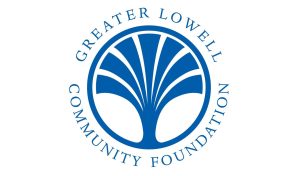 by Bill Haddad
by Bill Haddad
“The question is this: Is Massachusetts willing to make the changes? Because right now, we’re so busy patting ourselves on the back, I think we lost our way. I think we’re Blockbuster Video in 1992, and we’re not seeing Netfilx coming.” – Massachusetts Education Commissioner Jeffrey Riley to the Boston Globe (December 11, 2023)
Results of the 2023 MCAS scores show that 56% of the state’s public school 3rd graders were not meeting, or only partially meeting, reading expectations. For many low-income children, the results are even more troubling. 72% of Black and 80% of Hispanic/Latin 3rd graders are not reading at grade level.
How does Lowell stack up in the face of these statistics?
In 2019 MCAS scores showed that 54% of all Lowell 3rd graders were not meeting or only partially meeting 3rd grade reading proficiency. In 2022 this percentage increased to 76%, (Covid impact), and in 2023 the percentage dropped only one point to 75% (no testing was done in 2020 and the tests were voluntary in 2021).
Why the focus on 3rd grade reading?
The research is clear: The inability to read by third grade is probably the single most important factor in a child’s education. If children cannot read proficiently by the end of 3rd grade, they face daunting hurdles to success not only in school, but in life.
 Until the end of 3rd grade, most children are learning to read. Beginning in 4th grade however, they are reading to learn, using their reading skills to gain more information in subjects such as math and science and to think critically about what they are learning.
Until the end of 3rd grade, most children are learning to read. Beginning in 4th grade however, they are reading to learn, using their reading skills to gain more information in subjects such as math and science and to think critically about what they are learning.
“Up to half of the printed 4th grade curriculum is incomprehensible to the students who read below 3rd grade level,” according to the Children’s Reading Foundation.
A Yale research report found that three quarters of students who are poor readers in 3rd grade will remain poor readers in high school.
Lowell’s 2022 and 2023 MCAS scores support this data, with 70% and 72% of 8th graders, respectively, not reading at that grade level.
The problem is even more pronounced in low-income families, where many children are already 1 to 3 years behind their middle- and upper-income peers by the time they get to kindergarten.
 Children from middle-income families begin Kindergarten with a vocabulary of 20,000 to 30,000 words, whereas children from low-income families start school with about 5,000 words, indicating the literacy gap appears well before children step foot in a classroom.
Children from middle-income families begin Kindergarten with a vocabulary of 20,000 to 30,000 words, whereas children from low-income families start school with about 5,000 words, indicating the literacy gap appears well before children step foot in a classroom.
According to the Annie E. Casey Foundation, “low-income children who cannot read proficiently by the end of 3rd grade today are all too likely to become our nation’s lowest income, least skilled, least productive, and most costly citizens of tomorrow. They are also four times more likely to drop out of school.”
So what does this mean for Lowell’s students in the long run, and what are some of the city’s educational leaders saying in response?
We’ll delve into that in Part 2 of our story, next week.
(Bill Haddad is the Executive Director of On the Move, a non-profit organization dedicated to helping close the reading preparation and achievement gaps between children from low-income families and their middle and upper income peers)















